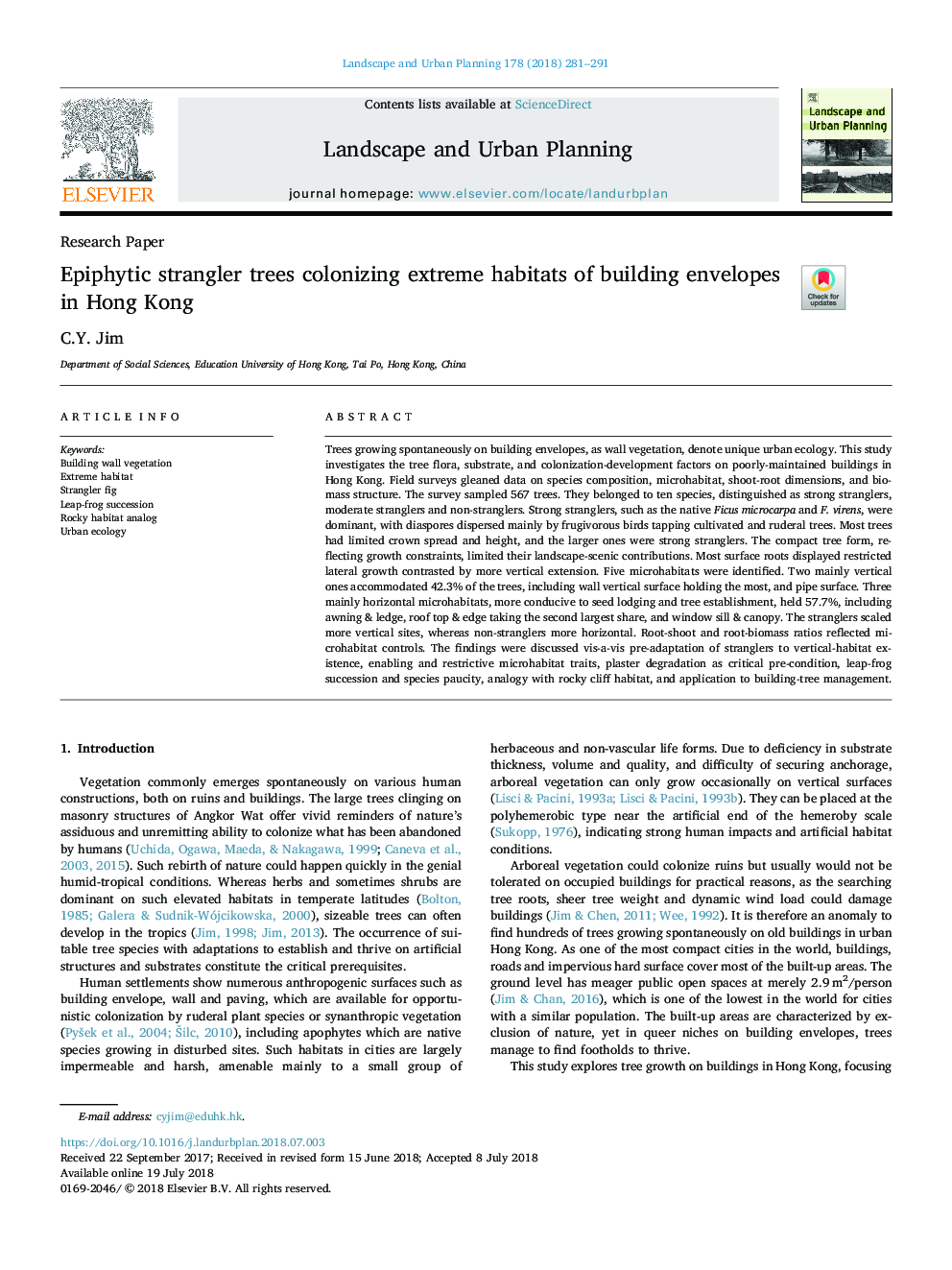| Article ID | Journal | Published Year | Pages | File Type |
|---|---|---|---|---|
| 7459656 | Landscape and Urban Planning | 2018 | 11 Pages |
Abstract
Trees growing spontaneously on building envelopes, as wall vegetation, denote unique urban ecology. This study investigates the tree flora, substrate, and colonization-development factors on poorly-maintained buildings in Hong Kong. Field surveys gleaned data on species composition, microhabitat, shoot-root dimensions, and biomass structure. The survey sampled 567 trees. They belonged to ten species, distinguished as strong stranglers, moderate stranglers and non-stranglers. Strong stranglers, such as the native Ficus microcarpa and F. virens, were dominant, with diaspores dispersed mainly by frugivorous birds tapping cultivated and ruderal trees. Most trees had limited crown spread and height, and the larger ones were strong stranglers. The compact tree form, reflecting growth constraints, limited their landscape-scenic contributions. Most surface roots displayed restricted lateral growth contrasted by more vertical extension. Five microhabitats were identified. Two mainly vertical ones accommodated 42.3% of the trees, including wall vertical surface holding the most, and pipe surface. Three mainly horizontal microhabitats, more conducive to seed lodging and tree establishment, held 57.7%, including awning & ledge, roof top & edge taking the second largest share, and window sill & canopy. The stranglers scaled more vertical sites, whereas non-stranglers more horizontal. Root-shoot and root-biomass ratios reflected microhabitat controls. The findings were discussed vis-a-vis pre-adaptation of stranglers to vertical-habitat existence, enabling and restrictive microhabitat traits, plaster degradation as critical pre-condition, leap-frog succession and species paucity, analogy with rocky cliff habitat, and application to building-tree management.
Keywords
Related Topics
Life Sciences
Agricultural and Biological Sciences
Ecology, Evolution, Behavior and Systematics
Authors
C.Y. Jim,
